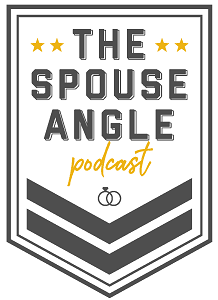Nearly 70% of military and veteran suicides involve a gun
Veterans are at a 50% higher risk of suicide than civilians who have not served, according to Stop Soldier Suicide. (Lance Cpl. Claudia Nix/Marine Corps)
September is suicide prevention awareness month.
The U.S. in July activated 988, a new three digit phone number (working similarly to 911) for access to 24/7 suicide crisis care.
But military and veteran suicides are the highest they’ve been since World War II — and the highest on record in the post-9/11 era.
In April, the CEO of Stop Soldier Suicide came on The Spouse Angle podcast to talk suicide prevention and efforts focused on firearm safety.
Chris Ford served in the Air Force for 20 years, he told The Spouse Angle, and said three airmen who died in combat or other instances really affected him — and gave him a heart for military mothers who had to bury their children.
His work with veteran-founded-and-run organization Stop Soldier Suicide offers military veterans and families trauma-informed intervention services, and is dedicated to reducing the military suicide rate by 40% in 2030.
Veterans are at a 50% higher risk of suicide than civilians who have not served, according to Stop Soldier Suicide.
And troops and veterans are far more likely to use a firearm in attempting suicide than any other means, a Center for American Progress report showed.
Sixty-nine percent of military and veteran suicides involve a gun — compared to 48% of suicides in the U.S. civilian population, according to the 2021 National Veteran Suicide Prevention Annual Report.
“Firearms are so lethal as a means for suicide,” Ford told The Spouse Angle. “Anywhere from 83%-95% effective when used in suicide attempts.”
Service members and veterans are more likely to have guns in their home.
Since suicide can often be an impulsive decision, safety measures can help, the Defense Department has said.
“The idea around lethal means safety — whether its firearms or opioids — is really important to allow the rational mind take back over in a moment of crisis, and put time and distance between a very lethal means and that decision so that they can buy more time and calm down, regroup, reassess, get help, reach out to somebody,” Ford said.
The safe storage of firearms can help “prevent a dangerous, lethal suicide attempt,” the VA says.
Having direct conversations about suicide can help dramatically.
Ford suggests saying something like, "‘Hey, it sounds like you are in a bad place, are you thinking about suicide?’”
If the person responds, ask if you can get them to care and help, he said, noting that knowing in advance where to send them is important.
If there are firearms accessible, directly discuss safety options there too. Earlier is better than later, Ford said. Do it early and often and ask if you can help. Don’t wait until a crisis moment.
If you or someone you love is in crisis, you can call the new 988 hotline number or the old 1-800-273-8255 number and select option 1 to reach a VA staffer. In addition, veterans, troops and family members can also text 838255 or visit VeteransCrisisLine.net for assistance.

